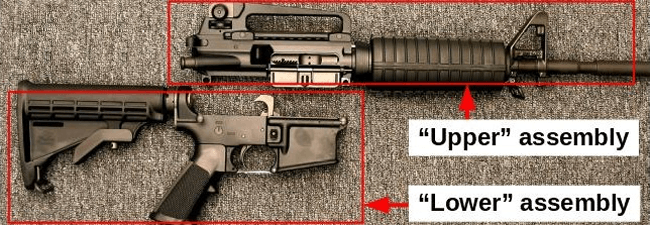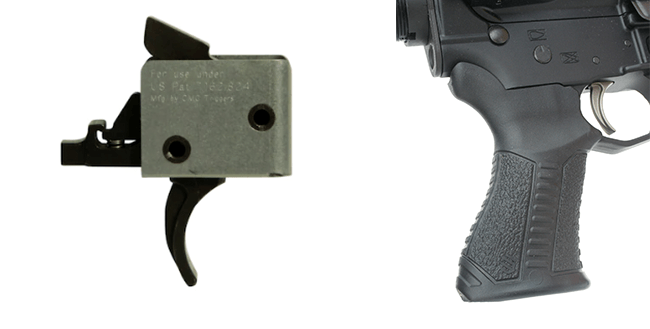The Marvelous MSR: They’re Functional and Customizable
By Scott E. Mayer
Build it up, take it down, make it something else: Today’s MSRs have legions of replacement parts, upgrades and add-ons that range from functional and necessary to just plain good-looking.
There is perhaps no other rifle platform ever made or will be made that is as easily customizable over such a variety of configurations as today’s modern sporting rifle. Similarly, no longer does one have to choose between only a sporter- or heavy-profile barrel, as each is now simply a footnote in catalogs touting a dizzying array of barrel choices. And that’s not to mention the fore-ends, stocks, sights, lights and lasers that can be added: An MSR is a multifunctional tool that each user can make their own.
Modify or Upgrade?
The DIY opportunities for MSR owners generally fall into two categories: modifications or upgrades. I consider modifications as things that actually change some level of performance, while an upgrade just makes existing performance better. (And, yes, there is some overlap as to whether something is an upgrade or a modification.)
Changing the upper receiver on your MSR would be considered a modification because doing so potentially changes the caliber or operating system of the firearm. The lower assembly of the MSR houses the magazine, trigger, grip and stock, while the upper of the MSR refers to the barrel, handrail, sights and operating system. The lower receiver is considered the main component of the firearm but many different upper receivers can be added to the same lower that could modify the operating system and caliber of the firearm.

Photo Credits: Liberty Gun Store
Swapping out your 5.56mm upper with a 6.5 Grendel upper, for example, modifies your MSR into a viable medium-game hunting rifle and allows you to shoot heavier and more ballistically forgiving bullets at long-range targets. Swapping uppers is simply a matter of pushing out two pins, and if you go with complete upper receivers, you don’t have to worry about things like the bolt head being the same size as the cartridge case head.

A better trigger is something I consider an upgrade. Your MSR, like any firearm, needs a good trigger — but sometimes the off-the-shelf isn’t quite what you’re looking for. You might want, for instance, a two-stage design that has noticeable pickup before you feel resistance. You might also want a really light target trigger for improved accuracy or, conversely, a heavier trigger for personal-defense. Many of the aftermarket triggers available today are fully self-contained, making them another easy two-pin proposition.
Changing a handguard could be either a modification or upgrade. A popular DIY change is to a free-floating handguard instead of one anchored at both ends. Because it does not touch the barrel, your rifle should shoot more accurately with a free-floating handguard, especially if you use a bipod or some other handguard-mounted device that can transmit pressure to the barrel. A handguard could also simply be an upgrade if you replace your existing one for one that is cosmetically more to your liking or that has accessory rails that allow you to take advantage of add-on devices such as lasers and lights.
Change is Good — And Sometimes Good-Looking
Reasons for making changes to your MSR boil down to function, accuracy or fashion. As for function, you can do things to make the gun run better, such as installing an adjustable gas block so that you can tune the impulse and cycling of the action. This type of adjustment should reduce the wear and tear on the gun, and some would say it makes the gun run cooler and cleaner. If changing the block is a bit intimidating but you still want that kind of adjustment, there are drop-in replacement bolt-carrier groups that let you make comparable adjustments there, and there are even adjustable gas keys if you don’t want to replace the entire group. Of course, your local gunsmith is always a smart option.
Other functional changes you can make include ambidextrous controls so you can operate everything either right- or left-handed or without modifying your firing grip. There are also coated bolt carrier groups that are easier to clean and more forgiving if you tend to be skimpy on gun oil.
When it comes to accuracy, barrels aren’t that hard to replace, but you will need some specialized tools and know what you’re doing. Also, make sure you don’t replace a rifle barrel with a pistol barrel. If your MSR started life as a rifle, make sure you keep it a rifle.

Ultimately, I think the bulk of modifications people make with their MSRs are cosmetic. We want our gun to look cool and express who we are as individuals. This can be accomplished with something as simple as different grips or buttstocks — again, all easily swapped out. Some people have a preference for red dots or magnifying optics, depending on how they use their MSR, and many combine the two or add night vision by taking advantage of a long topside accessory rail. I’ve seen handguards available where, within reason, you can give the manufacturer a design and they will cut that design just for you, making your MSR truly one-of-a-kind. Give it a specialized color dip or Cerakote finish and you could find yourself the envy of everyone else on the range.
When you consider the many accessory rail styles, various add-ons such as lights, fore-end handgrips and component materials including aluminum, carbon fiber and polymer, the things you can do with an MSR are almost limitless. For the most part, they’re also easy to do and don’t require a lot of expensive tools. Best of all, most of the better parts sources have detailed instructional videos that let you see what’s involved before you ever spend a dime and then walk you through your modifications when it’s time.
You may also be interested in:
https://www.letsgoshooting.org/2019/07/24/the-marvelous-modern-sporting-rifle-direct-impingement-or-piston-driven/